|
Question: My nails are discolored, and yellow. Some nails have dark lines in them. Is the dark discoloration cause by toenail fungus that could be cured with laser treatment? Answer: Some of the dark lines in nails can be congenital and gradually become more prominent over time. However, dark lines in the nails can also be caused by toenail fungus. As the fungus grows within the keratin that makes up the toenail plate, the fungal filaments expand and separate the layers of keratin. That separation causes light to refract differently and realist in color changes. Sometimes the nail can look dark brown, black, dark green or yellow. The areas of discoloration gradually spread over time. The fungus actually damages the nail as it becomes more and more discolored. The growing toenail fungus pulls the moisture out of the nail, making the toenail brittle, cracking and crumbling in appearance.
1 Comment
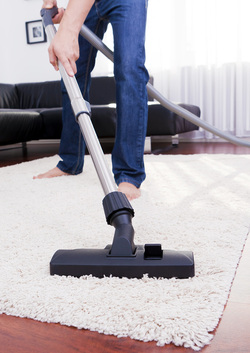 Toenail fungus spores are everywhere. Attempting to completely eradicate your home of athlete's foot and toenail fungus spores is about as easy as attempting to remove dust from your home permanently. Frankly, it is very difficult. Bleach and some other chemical disinfectants can completely destroy the spores. However, these chemical can also damage carpet fabrics and even hard flooring services. A HEPA certified vacuum cleaner can remove the majority of the fungal spores without putting your floors at risk. The name of the game is to simply reduce your exposure to the spores. Most of the spores are in the shoes in close vicinity to the toenails were they can get back in the damaged toenails and then re-infect the toenails. It is most important to decontaminate the shoes and socks. This is far more important than trying to keep dry flooring surfaces fungus-free. The biggest source of fungus in the home are areas that are continually damp. For example, most bathrooms and showers obviously have more moisture than most living rooms. In many people’s homes, the family members get up in the morning, shower and then leave for the day. So the bathroom may have a reasonable chance of drying out during the day. In contrast, gym locker rooms stay damp all day long. Part of the concern with foot fungus exposure in public showers and locker rooms is that people come and go. There is a continual re-moisturization of the surfaces in gymnasiums and other public showers. Those areas never dry out. And because of all that moisture, the fungus has more of an opportunity to thrive. Cleaning the bathroom with a dilute solution of bleach or other chemical disinfectant that can destroy the fungus can certainly decrease the overall amount of toenail fungal spores and live fungal filaments that could get spread throughout the home. While it is a good idea and totally reasonable to want to remove all of the fungus from the home, it is logistically a very difficult task. Just focus on making sure that the bathroom is clean and that you control the amount of fungus in your shoes and socks. Taking those steps will help to reduce the amount the risk of reinfection as you cure your toenail fungus. Today I just received a question from a patient who just had a complete laser treatment to kill the toenail fungus in his toenails last week. Understanding how important it is to get rid of all the fungus in his shoes, he ordered the Steri-shoe through our discount link. But he wanted to know what the best routine with the Steri-shoe ultraviolet shoe sanitizer to treat the toenail fungus spores that had accumulated in his shoes. Answer:
To answer your question regarding how frequently you should use it, I think it is important to focus on controlling the amount of fungal spores that end up in your shoes that could cause a re-contamination and re-infection of the treated toenails. If you have any toenail fungus spores that are living in the skin (in the form of an athlete's foot infection), they can easily get back into the damaged, cracked, splitting areas of the toenail, even if we just did a laser treatment to kill all the fungus in the toenails. The toenails are highly susceptible to reinfection when I have been damaged by the toenail fungus. When you have athlete's foot and you are applying a topical antifungal to kill the fungus in the skin, you are still shedding some fungal spores and fungal elements into the shoes. The more peeling of the skin, the more toenail fungus spores are getting shed with the skin as it heals. If you see any peeling of the skin that is related to athlete's foot I would recommend using the Steri-shoe daily on any shoes that you are wearing while you are treating the athletes foot infection. This usually goes on for a week or two. Here's the routine that I think works best when you have athlete's foot and have just had a laser treatment to kill the toenail fungus: 1. Start using topical antifungal treat the athlete's foot in the skin on the feet initially. 2. laser treatment to kill the toenail fungus in the toenails. 3. Apply topical antifungal solution to the toenails to help prevent any reinfection of the toenails from the fungus in the skin. 4. Day 1 of Laser toenail fungus treatment: treat all of your shoes with chemical disinfectants and or the Steri-shoe ultraviolet shoe sanitizer. 5. Use the Steri-shoe ultraviolet shoe sanitizer at the end of the day, every day on any shoes that you have learned during the first two weeks after Laser toenail fungus treatment. 6. After that, just use the Steri-shoe ultraviolet shoe sanitizer once a week to treat any shoes that you have been wearing in order to keep the fungal load under control and help prevent reinfection of the toenail fungus. 7. Any time you run, play basketball, soccer, or any other athletic activity where she's become excessively sweaty, use the Steri-shoe ultraviolet shoe sanitizer that evening to help dry the shoes out and kill any fungus before it can start growing in your shoes again. 8. if you get any athletes foot infection in the future, repeat the above process with the steri-shoe and topical antifungal for the skin BEFORE you get a toenail fungus infection again. If you take all of these steps and are diligent about making sure that you prevent the fungus from returning to your shoes and potentially reinfected toenails it will certainly help increase your chances of success with the laser toenail fungus treatment. Although somewhat tedious and time-consuming this effort is necessary to optimize your chances for a successful treatment and clear toenails. Dr. Christopher Segler is board-certified, American Board of Podiatric Medicine. Is unique practice focuses on treating patients in the most efficient, least disruptive manner. In keeping with this mission, he performs house calls in San Francisco Silicon Valley and Marin County to treat toenail fungus for patients who are busy and do not want to have the embarrassment of going to a doctor's office to discuss their discolored toenails. Click here to arrange a free consultation to find out if laser toenail fungus treatment could help you have clear toenails again. Running is a great way to lose weight, beat stress, increase strength and maintain an overall healthy lifestyle. Unfortunately, runners are sometimes plagued by a nasty little fungus that can cause some serious infections. Where does this fungus hang out? Toenails. The infected toenails often turn black, become brittle, and emit a foul odor. But, what causes this to affect runners? Here are the five major causes of toenail fungus among runners:
Long Periods of Exposure of Runners’ Feet to Warm and Moist Conditions Virtually all runners expose their feet to warm and wet conditions. The warm and moist conditions commonly result from the sweating of the feet during intense running exercises within the shoes while running and these conditions make an ideal environment for the growth of fungus. This risk intensifies for runners who run daily because their shoes never completely dry out. If they continue to wear the same shoes the rest of the day the risky grows even more allowing the fungus to grow and breed while spreading on to the nails and under the nail-bed. The nail-bed is the most moist and warm environment of the feet. Barefoot Running and Walking Barefoot running, which has also become increasingly popular on beaches, can increase chances of fungal growth because the foot is not protected at all. When a runner is barefoot they can come across bacterial in pools, shower areas, even on the grounds they choose to run on. Injury Injury to the toes and nails is also a common cause of toenail fungus because they break and the nails and skin increasing potential exposure and vulnerability to fungal infections. Anytime skin is open bacteria is more easily able to enter and cause an infection. Running with dirty feet and/or dirty socks If you don't clean your feet regularly and you run with yesterday's socks, you're asking for trouble. You should be cleaning your feet, and your body too for that matter, regularly and always putting on a fresh clean pair of socks before going for a run. Loosely-laced and poorly-fitted shoes Wearing loosely-laced shoes or shoes that do not fit because they are either too small or too big can worsen the problem by increasing chances of getting injured and creating a moist, warm, and unventilated environment within the shoes due to sweating. Tightly fitting shoes or loosely-laced shoes that restrict the motion of the feet or increase the shoe’s movement can cause excessive tightness and rubbing of the skin, which causes bruises. Your shoe should fit snugly, but also allow a little room for the foot to slide forward while running. However, if the shoes are too tight, the sliding of the foot forward causes to toes to bump onto the toe-box and possibly get injured. Tightly laced shoes can also cause compression on the toenails, which when coupled with the repetitive movements of running can cause bruising that increases vulnerability to fungal infections. Lengthy periods of running exacerbate the problem because such runs increase the stress exerted on the feet, and feet swelling that often occurs during long runs can also worsen the problem. Bottom Line The chances of fungus breeding and fungal-related infections are high among athletes with sweaty feet that are often confined in shoes for extensive exercising periods without ventilation. The longer a runner’s feet are kept in such conditions, the higher the chances of the runner getting vulnerable to the fungi and even experiencing the fungal infection. To combat against this always dry out your shoes daily, consider using a different pair of shoes for daily wear vs. running, wash your feet regularly and use fresh socks for every run. That combined with removing your shoes after running and drying them completely before putting on a different pair of shoes should decrease your risk for fungal issues. Dr. Christopher Segler is Board Certified, American Board of Pediatric Medicine. He see patients at home in San Francisco, Palo Alto, Menlo Park, and San Jose so that they can get cutting edge diagnosis and treatment of toenail fungus infections right in the comfort and convenience of their own homes. If you think you may have toenail fungus and have a question about it, you can reach him directly at 415-308-0833 or email him at [email protected] . Toenail fungus is one of the most commonly treated foot infections in many countries. Nail fungus is a slow-growing ailment caused by dermatophyte fungi. This group of fungi infects nails, hair, and even the skin. While dermatophytes cause more than 90% of fungus-related toenail infections, other fungi such as molds and yeasts can also cause the disease. How do people contract the toenail fungus that causes these infections? Toenail fungus may stem from scores of different places, but below are the top five sources of toenail fungus infections.
1. Swimming pools Some studies show that many people unknowingly contract toenail fungus infections via swimming pools and other related facilities. Naturally, dermatophytes such as Microsporum, Trichophyton and Epidermophyton, which cause toenail infections, are found in warm and humid environments. Thus, people who visit the swimming pools are more likely to come into contact with the organisms. When they enter into contact with keratin surfaces, dermatophytes may get attached especially if the conditions are suitable. Later, the fungi penetrate and start to feed on the surface of the toenail and nail bed subsequently leading to infection. 2. Gyms and Nail Spas People who get pedicures from nail salons that don't disinfect their tools appropriately are more at risk for contracting toenail fungus. Tools, such as nail clippers and emery boards can spread fungal infections from one person to another. Gyms are also harbors of fungus because of the hot and sweaty conditions. Like tools used in pedicures, gym equipment should be regularly sanitized to minimize the spread of the fungus. 3. Public showers Public baths can also harbor toenail fungi. Most public showers are hot and wet making them ideal breeding grounds for fungus. Unsurprisingly, the risk of fungus contraction is even higher among people who use poorly maintained public showers. 4. Tight fitting shoes and dirty socks Wearing tight fitting shoes is a common risk factor that promotes the development of toenail fungus. Since most dermatophytes thrive well in warm, moist and damp conditions, wearing tight fitting shoes and socks encourages the development of fungi. Heavy foot perspiration combined with inadequate sock ventilation can also lead to fungal growth. It is important to maintain high standards of hygiene such as putting on clean socks and wearing well-ventilated shoes to discourage the growth and development of toenail fungus and other infections. 5. Nail trauma and walking barefoot Like other microbial infections, toenail fungi penetrate open wounds to cause toe infections. The presence of open wounds, injured toes, and long toenails can promote infection by toenail fungus. Walking barefoot in damp areas such as bathrooms, locker rooms or gyms can also lead to toenail infections. When walking in humid conditions, individuals should wear waterproof shoes or avoid walking under such conditions completely when possible. These are just some of the sources of toenail fungus infections. There are many others. The important thing to remember is that there are things you can do to reduce your risk of contracting a toenail fungus infection. At the top of the list is to regularly clean and dry your feet. Wear dry shoes and dry socks regularly and when you can let your feet breathe. Things like this won't guarantee that you'll never encounter toenail fungus, but it'll certainly help you be less likely to deal with it. Dr. Christopher Segler is Board Certified, American Board of Pediatric Medicine. He see patients at home in San Francisco, Palo Alto, Menlo Park, and San Jose so that they can get cutting edge diagnosis and treatment of toenail fungus infections right in the comfort and convenience of their own homes. If you think you may have toenail fungus and have a question about it, you can reach him directly at 415-308-0833 or email him at [email protected]. Is your nail salon the culprit behind toenail fungus? Well, according to several studies and reports, your trusted nail salon that provides those glittering pedicures can in fact be spreading nasty toenail fungus that can cause infections. How do nail salons spread toenail fungus? It all boils down to one simple concept – when nail salons don't maintain a sterile environment and use clean tools, fungus and subsequent infections can easily be spread. Breaking Down the Sources of Fungus in Salons
What Can you Do to Prevent Contact With Fungus? Since we are exposed to fungus and bacteria at all times, contact and subsequent infections are always a possibility. Still, protecting yourself could be as simple as following these practices: • Use anti-fungal powders/ sprays before and after your pedicure • Make a habit off washing your hands and feet regularly and after touching infected surfaces • Take time to dry of your feet after showering and remember between the toes • Only use trustworthy professional salons for your pedicure • Bring your own items to the salon for your pedicures, or at least make sure that fresh, sterile tools are being used • Choose moisture-minimizing socks and never stay barefoot in public spaces • Reduce the number of times you use nail polish and artificial nails There is nothing wrong with getting pedicures. Just make sure you are protecting yourself by only going to reputable salons and following the tips provided above. Fungi and bacteria may be everywhere, but it doesn't mean you have to subject yourself to risk of infection. If you think you may have gotten toenail fungus from a pedicure at your nail salon, make sure you treat it as quickly as possible. The fungus may only look like spots initially, but it gradually gets worse...and yes, it gets even uglier. You can call Dr. Christopher Segler directly to ask about your toenails if you are concerned that you have toenail fungus infecting your toenails. 415-308-0833 or email him at [email protected]. Health experts have confirmed that fungi is present in and on the body and therefore fungal infections can affect any part of the body. Toenail fungal infections are unfortunately one of the more common infections people can contract. How can you detect whether or not you have a toenail fungal infection? Here are the top five clues to look for to determine if you have one:
1. Toenail color changes One of the common changes will be development of yellow streaks under the nails. Health experts consider this the initial sign that an infection is developing. If the nail in question turns green, there is definitely an infection and it is likely bacterial. White and yellow nails indicate fungal and yeast infections. Yellow nails indicate fungus. In some cases, however, the color change is more subtle. The shininess of the nail simply fades. Other times the nails turn a darker color than normal. If you regularly paint your toenails, it's a good idea to take off the polish completely once in a while to check on your nail bed’s color. 2. Toenail texture changes If your toenails become exceptionally brittle or have begun to thicken you could be suffering from an infection. In some cases the toenails will break, or the shape will become distorted by the growing fungus. 3. Toenail separation In some cases of toenail fungal infection, the nail can completely separate from the nail bed. If you have not recently stubbed your toe or endured any similar injuries, this could be an indication of trouble. The unfortunate thing is sometimes when you have a fungus-related infection you won't even feel the separation. Therefore, it's even more critical to regularly examine your feet. 4. Pain As the infection advances, pain may be felt on the affected part. Furthermore, the surrounding tissues may get inflamed. Pain is attributed to the thickening nails. If you gently press the nail and find the area is tender or sore, you could have an infection. It is also important to clarify that the pain is not a result of tight footwear or other toe conditions, however. 5. Odor A bad smell is another reliable indication that you have a toenail fungal infection. As the fungus causes the toe tissues to die, an odor will be given off. This option is relatively tricky because bad smell can be caused by other factors apart from fungal infection. For example, wearing shoes for a long time can lead to the development of unpleasant odors. This is common in people whose feet sweat. Because of this many people will go undiagnosed, simply assuming they have stinky feet. If this is the case and you're not quite ready to seek medical confirmation, wear open footwear such as sandals for a couple of days. If you still have an odor, it's a pretty clear indication there is trouble afoot. Other indications include a discharge of pus, running a fever and red streaks around the area. If you suspect you have a toenail fungal infection, visiting a doctor isn't a bad idea. Your case may or may not warrant prescription medication, but it's better to know what you're dealing with than play the wait and see if it gets better game. Dr. Christopher Segler is Board Certified, American Board of Pediatric Medicine. He see patients at home in San Francisco, Palo Alto, Menlo Park, and San Jose so that they can get cutting edge diagnosis and treatment of toenail fungus infections right in the comfort and convenience of their own homes. If you think you may have toenail fungus and have a question about it, you can reach him directly at 415-308-0833. QUESTION:
Hi Doc! My boyfriend has toenail fungus on both feet and he had a discount laser treatment from another clinic about 6 months ago. We were hoping that this would help, but his toenails still look like they are the same as before the laser treatment. The fungal toenails are still yellow, thick and crumbly. He hasn't had any improvement at all. If laser treatment did't help, are there other options that he can try? Thanks! CJ. ANSWER: Hello CJ, I am sorry to hear your boyfriend has not made a full recovery. If he had a laser treatment and the toenails didn't get better, he still has several options: Laser Re-Treatment 1. Re-treatment with the laser. This is the fastest way to kill the fungus. But if we do this, we should schedule more than an hour. I would recommend doing a double laser treatment in one setting. Basically, I would just make sure that the treatment is so thorough that there is no way the fungus could live through it. Prescription Anti-fungal Pills 2. Prescription terbinifine pills. If I give your boyfriend a prescription for the course of pills, he will need to have a blood test to make sure his liver is in good shape before beginning the course of medication. He would then need to have a blood test again in 6 weeks to make sure he isn't having liver damage. The prescription medication can cost more than laser treatment. And the pills can alter your taste (making some foods have a metallic taste) but it is usually transient and goes away once he stops taking the medication. Also, he CANNOT drink alcohol while taking the anti fungal pills. Prescription Strength Topicals 3. Prescription topical anti-fungal medications can also work, but they can tedious and very expensive. The advantage over the pills is that there is no risk of liver damage. I have seen one patient that had a bad reaction where he had to stop using it because the skin around the toenail became very red and inflamed. But this is not typical, and the redness and pain did resolve after he stopped using the topical anti-fungal on his toenail. The topical solution is applied to the toenails daily. They to be applied every day for almost a year. I have had patients tell me that they often need a few tubes of these medications since they have to apply it for almost a year. The cost can vary depending upon which pharmacy you use, but most patients have said they paid over $500 per tube in some cases. You would want to check with your pharmacy to inquire about cost before getting started, just to make sure it wouldn't be too expensive. No matter which treatment your boyfriend prefers, we have to make sure that he has NO Athlete's foot at all trying another treatment. If there is any peeling skin on the feet that looks like an athlete's foot infection, then I would suggest either a month of a topical anti fungal on the skin, or a 2 week course of the oral anti fungal prescription pills (instead of 3 months) just to clear the skin fungal infection. Once the fungus has been removed from the skin, we could do the laser treatment to clear the toenail infection. Making sure there is no athlete's foot is critical to success. Please let me know if you have any questions. You can also feel free to call me directly at 415-308-0833 if you have any other questions or would like more detail. Dr Christopher Segler is Board Certified, American Board of Pediatric Medicine. He brings the toenail laser directly to patients in San Francisco, Atherton, Palo Alto, Menlo Park and San Jose to so that they get have the laser toenail fungus removal treatment in the comfort and privacy of their own homes. If you think you have a toenail fungus infection that may need laser treatment, you can even arrange a complimentary web-consulation here. You can also call Dr Segler directly at 415-308-0833.
This question came from a patient who wants laser toenail fungus treatment, but inquired about getting only the worst of the infected toenails treated with the laser.
Question: Hey Doc, Several of my toenails are thick and discolored. But, the 1st toe on my right foot (my big toe) is the worst. I'd like to get an estimate for getting that toe treated, and I'd like to know if there are complimentary or discount treatments if I don't see results in 3-6 months. From my research, it sounds like 2 treatments are often needed. Answer: Hello, Thank you for your inquiry. I am sorry to hear that you're having trouble with your toenails but I would be happy to help. One thing that you have to understand is that treating toenail fungus is really an all or nothing proposition. Because the toenails become damaged when you have toenail fungus they're very easily reinfected...even from neighboring toenails. In fact, if you even have athletes foot where the same fungus is impacting the skin, then there's a good chance your infection won't completely clear and the toenails will still remain discolored...if you don't treat ALL or the toenails...or if you don't get rid of the athletes foot before we do the laser procedure. You can actually watch a short video that I created to help explain this....
The total cost of the laser toenail treatment is $949. But we would treat ALL of the toenails.
The cost includes the house call, evaluation, laser treatment, topical antifungal medication to help prevent reinfection of the toenails and physician dispensed decontaminant to kill the fungus in your shoes. In the last several years I've had very few patients who have had to have a second treatment. We simply do an extremely thorough job on the first treatment... And we make sure that patients don't have cases of athletes foot or other sources of reinfection that could re-infect the toenails. The entire appointment takes about an hour to an hour and a half depending upon the extent of the infection. But you will want to make sure that you block out enough time so that we can do an extended laser treatment session and make sure we wipe out the toenail fungus in one long session, rather than two or three short laser treatments. With this approach, as long as you don't have any athletes foot, (and understand that you have to actually do a lot on your own) we will be happy to come back and do a re-treatment if necessary, in 3 to 6 months...at NO CHARGE. You just have to confirm that you don't have any athletes foot before scheduling your laser treatment. But, as long as you don't have any athletes foot, just let me know what dates and times work for you and I'll be happy to schedule your laser procedure to remove the fungal infection in the toenails and get you moving back to clear toenails. Thanks! Dr. Christopher Segler Dr. Christopher Segler, is Board Certified, American Board of Pediatric Medicine. He specializes in the treatment of you healthy patients who lead active, busy lives. He actually brings the laser to patient's homes to perform toenail fungus treatments during a house call appointment. That way there is no missed work. In fact, he can even see you before work if you like. He treats patients in San Francisco, Palo Alto, San Jose and the rest of Silicon Valley. If you have a question about your toes and whether or not Laser Toenail Fungus Treatment is right for you, call him directly at 415-308-0833. This question came from a patient who had laser treatment and improved, but then started to notice the toenails were getting worse again...
Question: Hey doc, So my to nails appeared to get better but now my nails are getting worse again. :( Any recommendations on what we should do? Answer: I am sorry to hear that your nails may be back-tracking. If you feel they are getting worse, we could re-treat them with the laser. In that case we would really crank up the heat so to speak and make sure we wipe the fungus out and kill the fungus infection in the toenails. One thing to be sure of is that you don't have any athletes foot AT ALL. Athlete's foot is the same fungus infecting the skin. If you athlete's foot, it can easily re-infect the toenails that have been damages by the fungus infection. So, if you currently have (or recently had) any athlete's foot, you MUST get rid of it. You have to kill the athlete's foot fungus in the skin no the feet, and the toenail fungus spores in your shoes. Otherwise your toenails can easily get re-infected and the toenails may get worse again. If you would like you could take a picture of your feet (top and bottom) then send it to me so I can have a look to see if you have any athletes foot. If you do have any athletes foot, you could simply take a 2 week course of prescription Lamisil pills to wipe out the fungus infection in the skin, before re-treating with the laser. Thanks! Dr. Christopher Segler |
Dr. Chris SeglerPodiatrist, author, inventor, nationally recognized expert, lecturer and teacher, award-winning researcher specializing in combining the latest technologies and advanced treatments with the old-fashioned convenience of house calls. Archives
February 2017
Categories
All
|
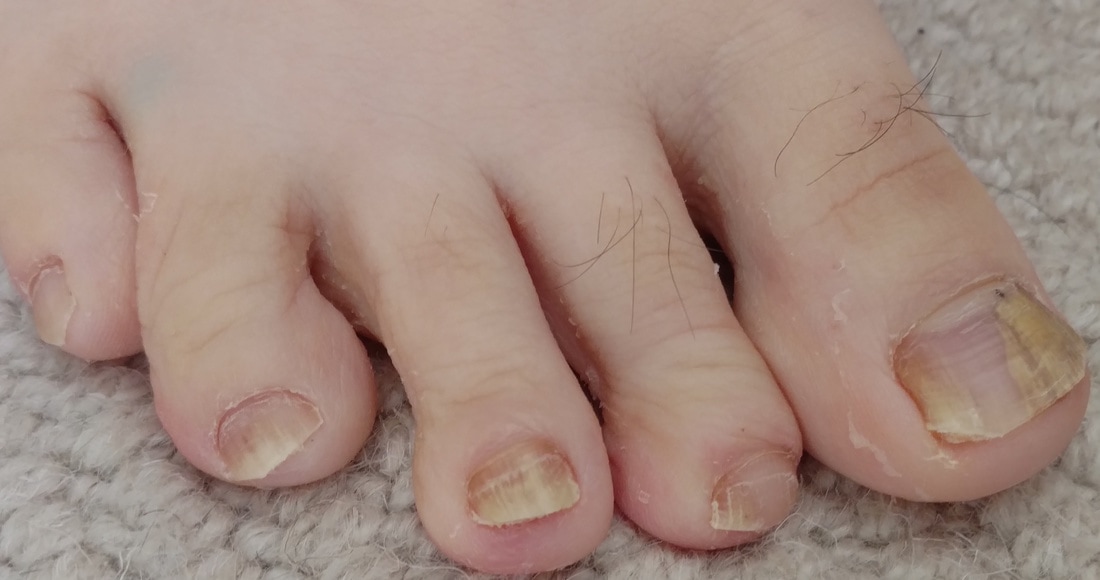
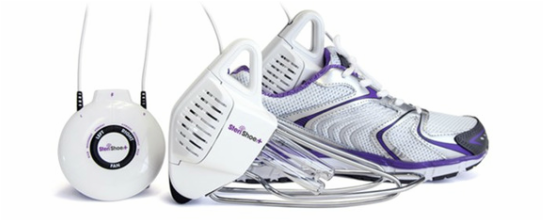

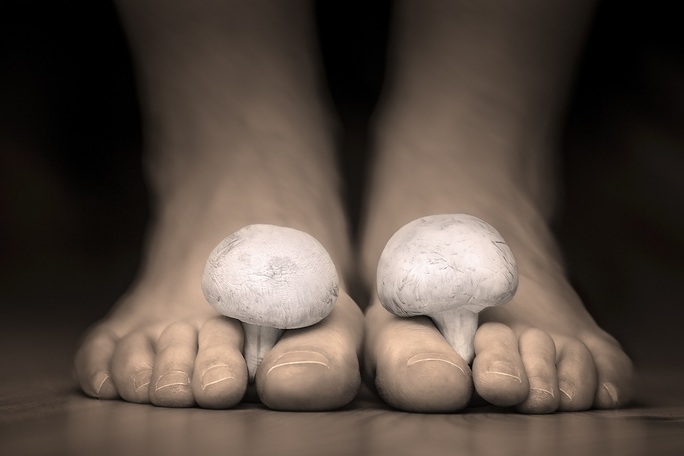
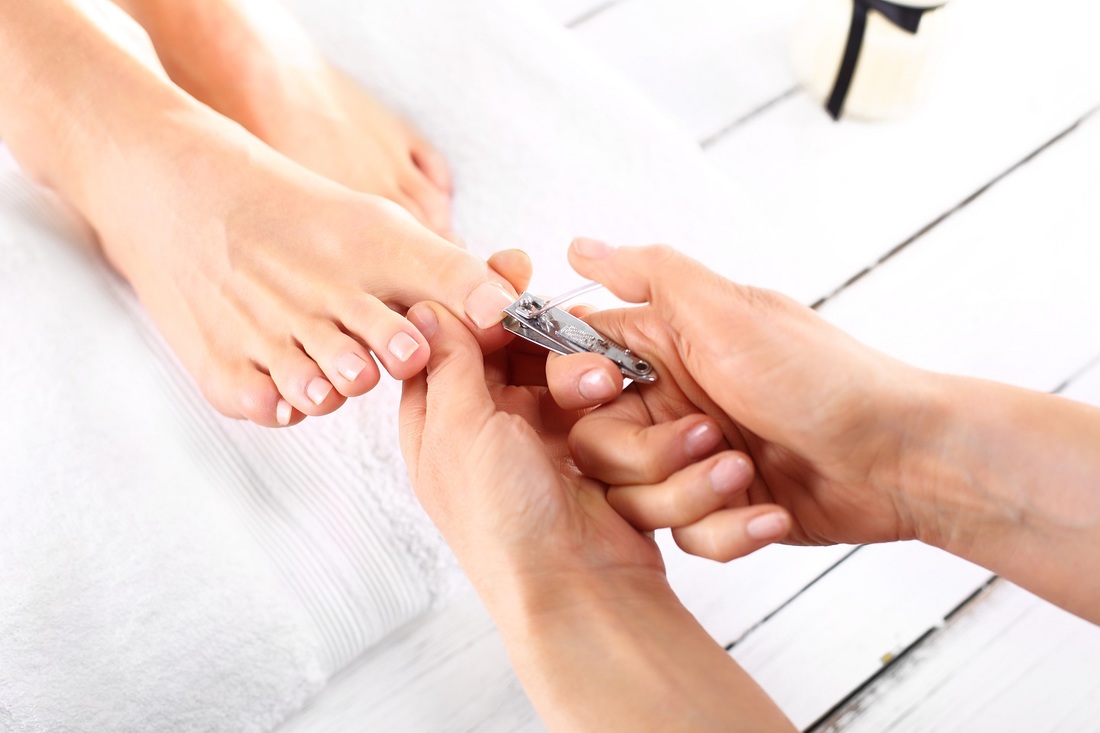
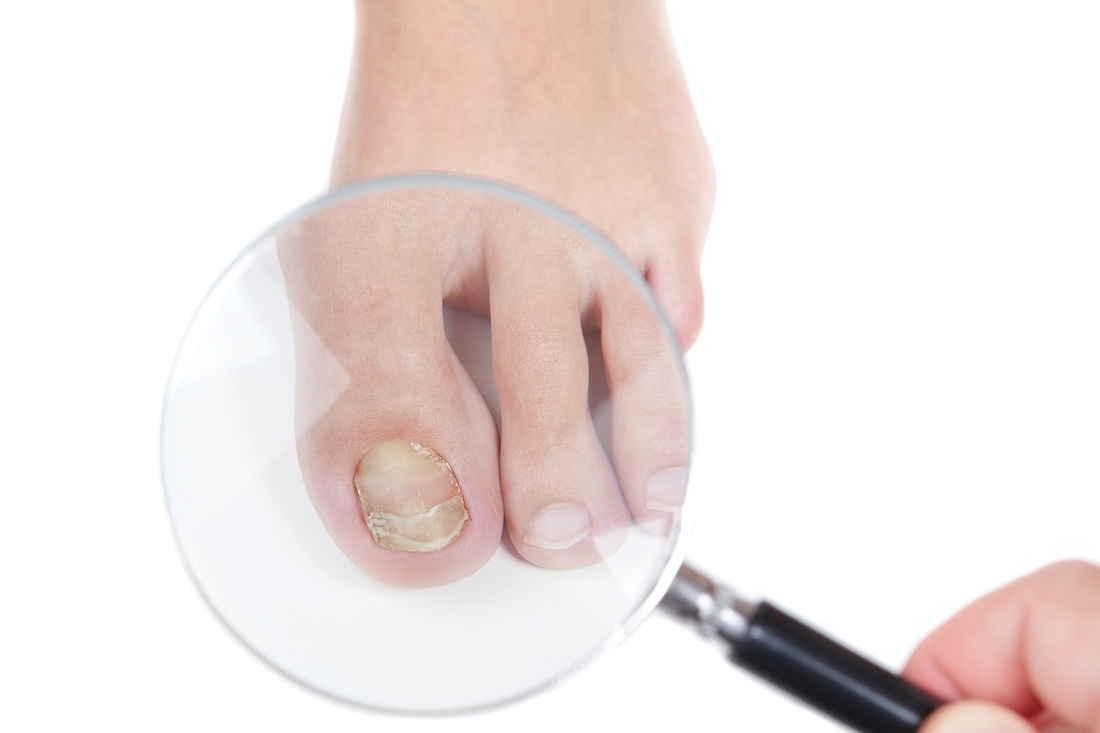
 RSS Feed
RSS Feed